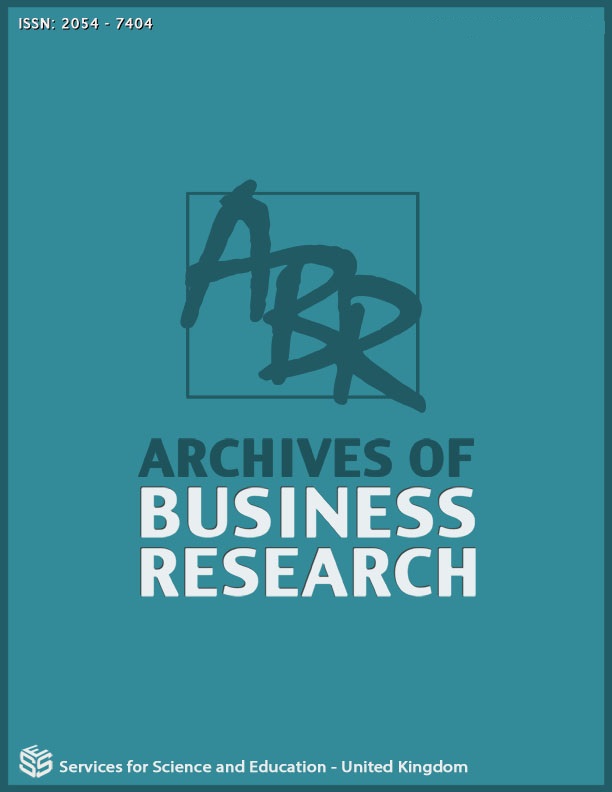Improvement of Interstellar Material and Energy Flows
DOI:
https://doi.org/10.14738/abr.94.9981Keywords:
Universe, Interstellar flows, Tool, Efficiency, ImprovementAbstract
Objectives
A novel approach is suggested to utilize the inherent forces of the universe for the benefit of mankind, by applying the model for Efficient Use of Resources for Optimal Production Economy (EUROPE) to improve the major flows of gas, dust, material and energy between stars and galaxies. This endeavour is regarded as promoting the altruism and benevolence by increasing life-forms’ chances to survive.
Methods
It is shown how the torus-shaped flows of gas, dust material and energy between stellar bodies in cosmos can be improved with the EUROPE model in order to preserve universe and secure its existence by allocating shadow costs to waste-like flows and unwanted radiation in this torus. The fewer shadow costs being allocated to the stellar residuals, the more efficient the cosmic torus flows, expressed in equivalents of antimatter released, by inducing incentives to improve the conditions for all inhabitants.
Results
The methodology promotes the economy when travelling in space, advances the technology used and improves the environment, when outer space in the future is explored and exploited. A single key factor enables monitoring, managing and evaluating the development of universe and the flows of gas, dust, material and energy between various stellar objects, such as the distant stars and whole galaxies.
Conclusions
I recommend using the EUROPE model to monitor, manage and evaluate the wastes and spillages of all material and energy phenomena throughout the known universe, to uphold its very existence.
References
[2]. Psychic Spirit in You, Torus – the fundamental geometry in the universe, 2012. Retrieved from http://psychicspiritinyou.com/2012/12/19/torus-the-fundamental-geometry-in-the-universe/
[3]. Stenis, J., Environmental optimization in fractionating industrial wastes using cost-benefit analysis. Resources Conservation and Recycling, 2004. 41(2): p. 147-164. 10.1016/j.resconrec.2003.09.005
[4]. Stenis, J., Construction waste management based on industrial management models: A Swedish case study. Waste Management & Research, 2005. 23(1): p. 13-19. 10.1177/0734242X05050184
[5]. Stenis, J., Environmental optimization in fractionating industrial wastes using contribution margin analysis as a sustainable development tool. Environment, Development and Sustainability, 2005. 7(3): p. 363-376. 10.1007/s10668-004-2377-z
[6]. Stenis J. and W. Hogland, Optimization of mining by application of the equality principle. Resources Policy, 2011. 36(3): p. 285-292. 10.1016/j.resourpol.2011.05.004
[7]. Stenis J. and W. Hogland, Optimization of the resource economy of metals, minerals and energy in an interplanetary perspective. In International Conference Linnaeus Eco-Tech, 2014. Proceedings. 10.13140/2.1.2449.0567
[8]. Stenis J. and W. Hogland, Economic optimization of landfill mining. The Journal of Solid Waste Technology and Management, 2015. 40(4): p. 389-398. 10.5276/JSWTM.2014.389
[9]. Stenis, J. and W. Hogland, Cost-effectiveness of recycling and recirculation of natural and energy resources based on the equality principle. Environment, Development and Sustainability, 2016. 18(1): p. 95-109. 10.1007/s10668-015-9627-0
[10]. Stenis, J. and W. Hogland, Guidelines for practical application of the EUROPE model to improve production units’ resource efficiency. The Open Waste Management Journal, 2018. 11(1): p. 41-49. 10.2174/1876400201811010041
[11]. Stenis, J. and W. Hogland, A theoretical model for ore mining waste management with regard to pollution of food webs in water bodies. Madridge Journal of Agriculture and Environmental Sciences, 2019. 1(2): p. 48-50. 10.18689/mjaes-1000109
[12]. Stenis, J., et al., Economic management for enhanced supply of utilities to megacities. In IOP Conference Series: Materials Science and Engineering, 2019. 497 p. 012061. Proceedings. 10.1088/1757-899X/497/1/012061
[13]. Spaceref, Dancing with the stars takes on a whole new twist, 2007. Retrieved from http://www.spaceref.com/news/viewpr.html?pid=23909
[14]. Lidgren, K., Industrial Environmental Economics, Editor 1993. Lund: Liber-Hermods, (Sweden).
[15]. Shadow-price. In Your Dictionary, 2021. Retrieved from http://www.yourdictionary.com/shadow-price
[16]. OECD, OECD Stats, 2021. Retrieved from http://stats.oecd.org/






